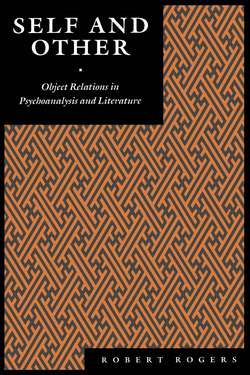Читать книгу Self and Other - Robert Rogers L. - Страница 16
На сайте Литреса книга снята с продажи.
2. TOWARD A UNIFIED THEORY OF OBJECT RELATIONS
ОглавлениеOne of the tasks facing anyone discussing object relations theory is that of mapping the terrain. What is to be included in the territory? To what extent is the field of object relations congruent with the domain of psychoanalysis as a whole? Pine treats object relations as just one of what he calls the four psychologies of psychoanalysis: “the psychologies of drive, ego, object relations, and self” (1988, 571). Pine’s discussion of these realms of theory makes no effort to reconcile their incompatibilities. He ignores the massive case against drive theory. He also ignores the possibility that ego psychology, self psychology, and object relations have much in common, whatever their differences. Pine’s uncritical eclecticism may be contrasted to Gedo’s cautious holism. Gedo, who laments the failure of psychoanalysis “to produce a theoretical consensus with regard to the proper place of object relations in our conceptual armamentarium” (1979, 362), questions Kohut’s claim that scientific disciplines may legitimately utilize uncoordinated fragments of theory: “If we have a choice, a unitary theory is preferable to a patchwork, the components of which bear no discernible relation to each other” (364).
According to the perspective assumed in this chapter, the deficiencies of drive theory and ego psychology have long since overwhelmed their former usefulness. The functions they sought to explain, such as unconscious motivation and conflict, can be better understood along different lines. As for what is left of Pine’s four psychologies, object relations theory and what I call self theory (as distinguished from Kohut’s self psychology) overlap so much as to make their concerns virtually insepa rable within the territory of psychoanalysis, provided, of course, that one assumes that psychoanalysis is a special psychology, limited in scope, which entertains no ambitions to be a general psychology. When I say that the concerns of self theory and object relations theory are virtually inseparable, I naturally do not mean they are indistinguishable from each other as fields of investigation. As definable areas of knowledge they reflect different perspectives and priorities. The crucial task is to explore the overlap of these distinguishable realms of attention without becoming confused by the differences. One aspect of the problem is terminological. For example, use of the terms “self” and “object” propagates a measure of confusion by tending to reify abstract categories in a way that blurs the existential inseparability of self and other, a conceptual problem addressed by Winnicotfs famous dictum (1952, 97-100) that there is no such thing as a baby (in that babies never appear except as parts of the “nursing couple” dyad). Mitchell speaks to the same issue, the impossibility of dealing with self and other separately, when he writes, “To assign priority to sense of self, object ties, or patterns of interaction is like trying to decide whether it is the skin, the bones, or the musculature that preserves the body farm. . . . The intrapsychic and the interpersonal are continually interpenetrating realms, each with its own set of processes, mechanisms, and concerns” (1988, 35).
For the practical purposes of ordinary discussion, therefore, the present work handles self theory as an aspect of object relations theory, object relations theory as an aspect of self theory, and attachment theory as a special branch of both. The possibilities for consolidation seem endless. One has only to think, for instance, of Bowlby’s emphasis on children’s sense of security in the presence of attachment figures in conjunction with the attention Winnicott and Mahler give to children’s ability to play in the presence of their mothers to get a sense of how much attachment theory has in common with object relations theory. An instructive instance of a particular analyst whose work successfully utilizes the combined perspectives of classical psychoanalysis, object relations theory, attachment theory, interactionalist views (Bower, Brazelton), and self theory without ignoring the differences can be found in V. Hamilton’s Narcissus and Oedipus (1982). Stern speaks of his version of self theory as having much in common with psychoanalysis and attachment theory, though it differs from them in treating a subjective sense of self as its primary organizing principle (1985, 25). Eagle (1984) aligns his views of object relations theory with attachment theory. Though other examples of par rial integration of these theories could be mentioned, the task of systematically combining the most meaningful parts of the various perspectives in question (in a way that would meet Gedo’s standards for a unitary theory) remains so formidable as to be far beyond the scope of the present chapter, which aspires to do no more than peek through certain windows of opportunity in order to see what a unified theory of object relations might look like when seen from a contemporary vantage point.
